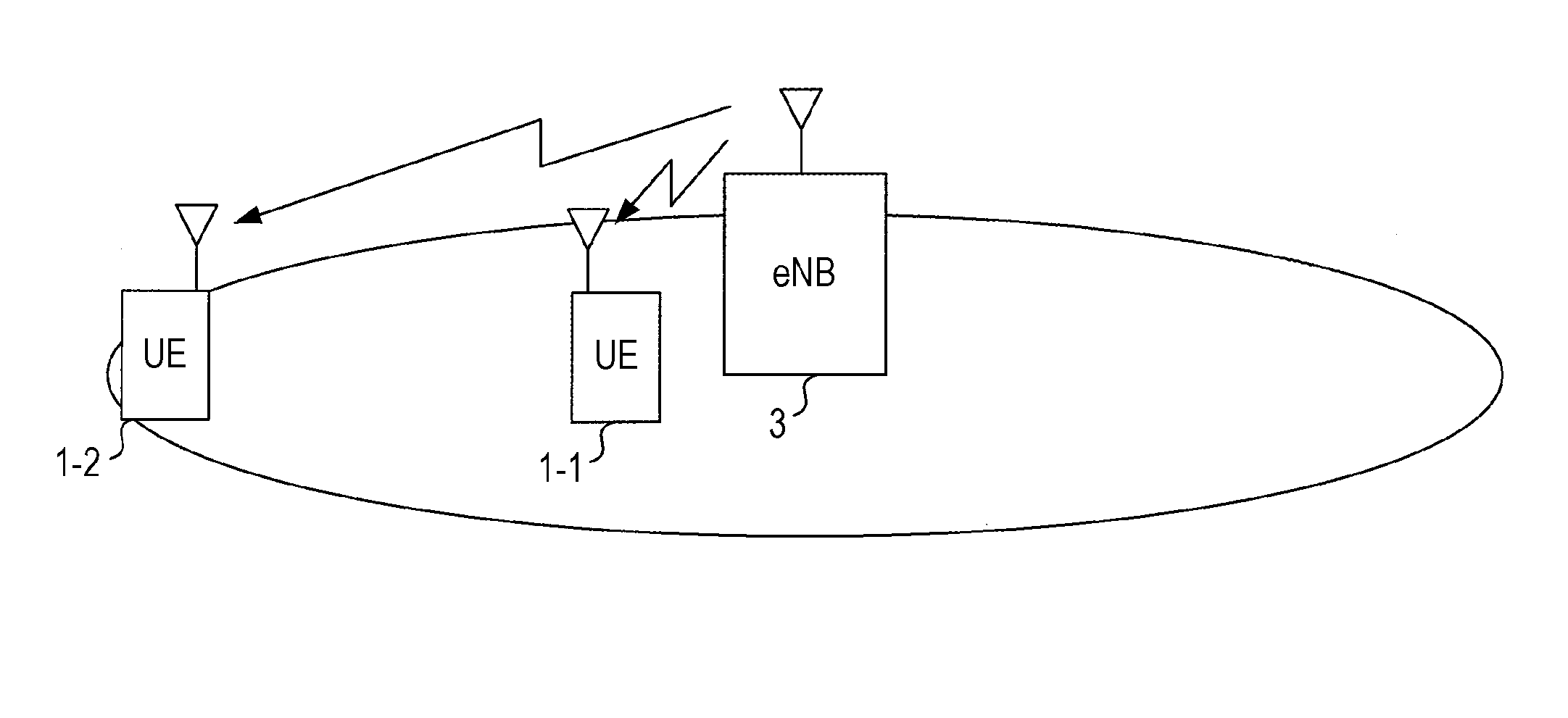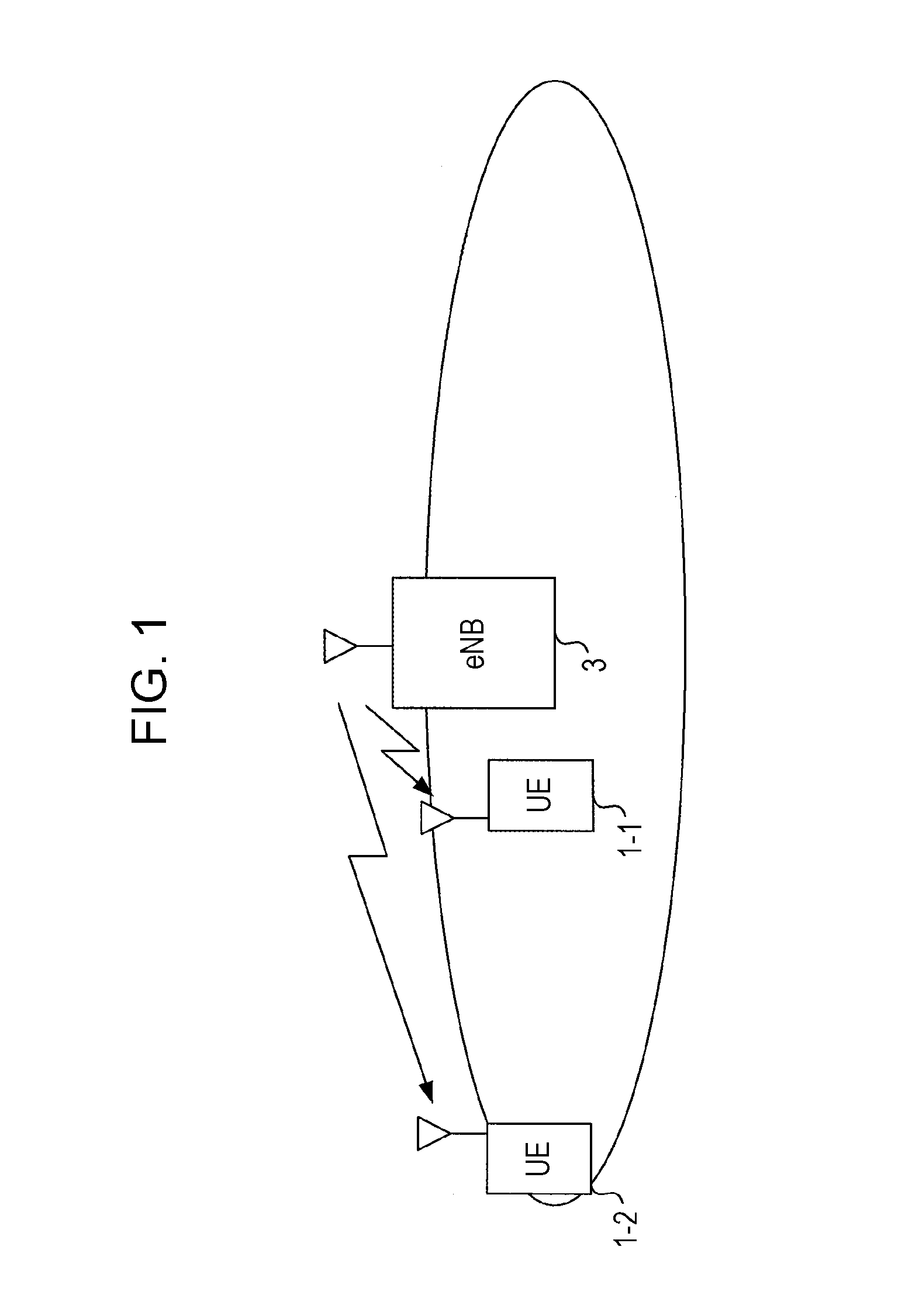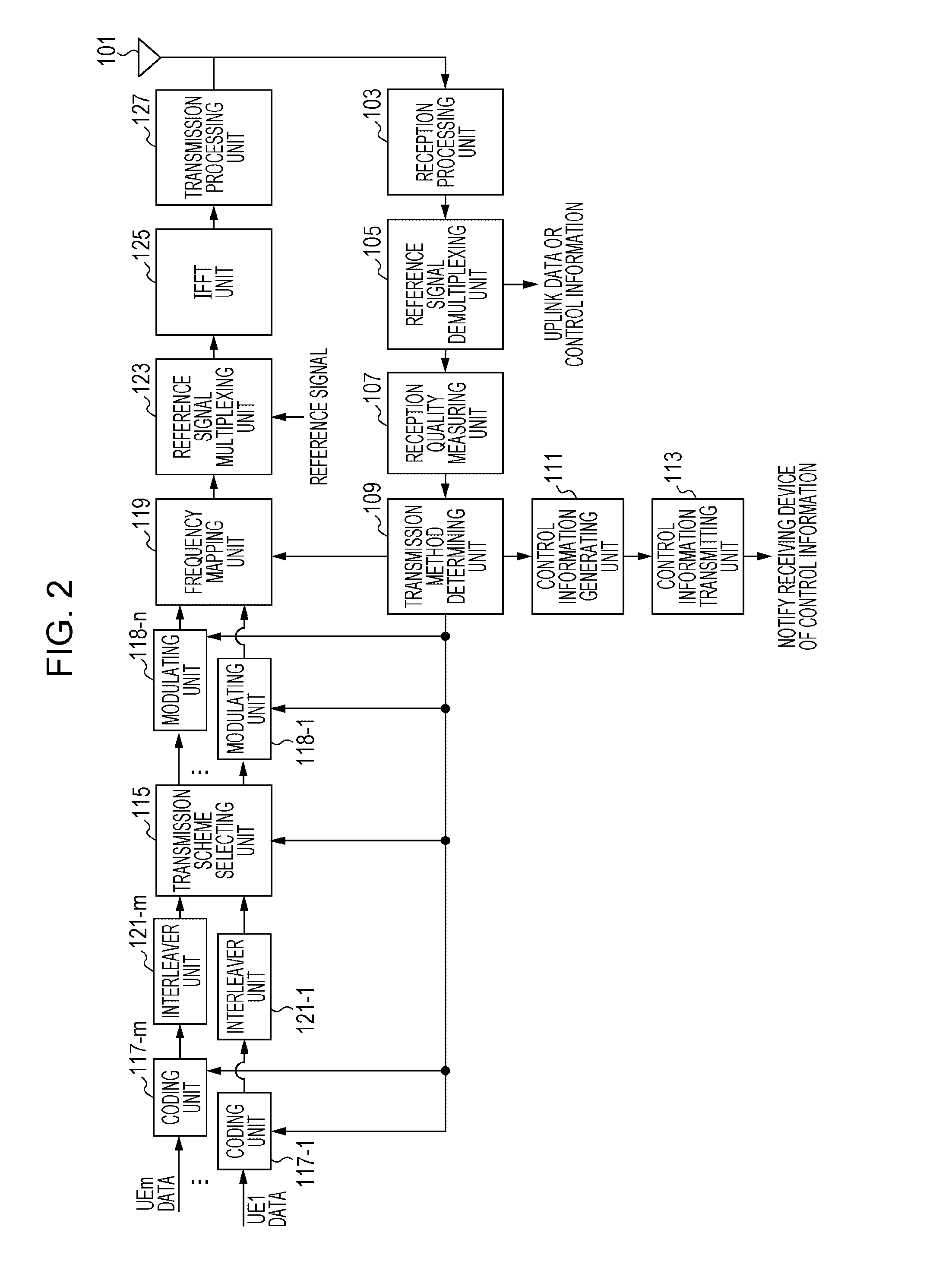Transmitting device, receiving device, transmitting method, program, and integrated circuit
- Summary
- Abstract
- Description
- Claims
- Application Information
AI Technical Summary
Benefits of technology
Problems solved by technology
Method used
Image
Examples
first embodiment
[0051]FIG. 1 is a schematic diagram depicting a communication system according to a first embodiment of the present invention. In this drawing, the communication system includes mobile station devices UE1-1 and UE1-2 (the mobile station devices UE1-1 and UE1-2 are hereinafter also collectively represented as a mobile station device UE1 or mobile station device 1) and a base station device eNB3 (hereinafter also represented as a base station device 3). When performing data transmission to at least two or more mobile station devices 1, the base station device 3 selects a transmission scheme for use in data transmission from either one of an orthogonal access scheme and a non-orthogonal access scheme. When data transmission by the non-orthogonal access scheme is performed, the mobile station device 1 to which the non-orthogonal access scheme is applied is selected. Furthermore, after notifying the selected mobile station device 1 of information required for the mobile station device 1 ...
second embodiment
[0085]While the ratio of signals to be assigned to each layer is fixed in the previous embodiment, the ratio is controlled in the present embodiment. The structures of a transmitting device and a receiving device in the present embodiment are similar to those of the above-described first embodiment, and are as in FIG. 2 and FIG. 9, respectively. However, the processes of the transmission method determining unit 109 and the modulating units 118-1 to 118-n of the transmitting device are different. Since other processes are similar, they are not described herein.
[0086]The transmission method determining unit 109 determines a transmission scheme, MCS, frequency assignment, and so forth for use in data transmission to each mobile station device 1 based on the inputted channel performance of the mobile station devices UE1-1 to UE1-m. The transmission scheme determines, in addition to information indicating which of the orthogonal access scheme or the non-orthogonal access scheme is to be ...
modification example of second embodiment
[0093]A modification example in the second embodiment is described. While it is predicated in the second embodiment that a notification of the information about the ratios of assignment to the first layer and the second layer is made as control information, the case is described in the present modification example in which a notification is not made as control information. The structures of a transmitting device and a receiving device in the present modification example are similar to those of the first and second embodiments, and are as in FIG. 2 and FIG. 9, respectively. However, only the transmission method determining unit 109 of the transmitting device is different from that of the second embodiment.
[0094]The transmission method determining unit 109 determines a transmission scheme, MCS, frequency assignment, and so forth for use in data transmission to each mobile station device 1 based on the inputted channel performance of the mobile station devices UE1-1 to UE1-m. The trans...
PUM
 Login to View More
Login to View More Abstract
Description
Claims
Application Information
 Login to View More
Login to View More - R&D
- Intellectual Property
- Life Sciences
- Materials
- Tech Scout
- Unparalleled Data Quality
- Higher Quality Content
- 60% Fewer Hallucinations
Browse by: Latest US Patents, China's latest patents, Technical Efficacy Thesaurus, Application Domain, Technology Topic, Popular Technical Reports.
© 2025 PatSnap. All rights reserved.Legal|Privacy policy|Modern Slavery Act Transparency Statement|Sitemap|About US| Contact US: help@patsnap.com



